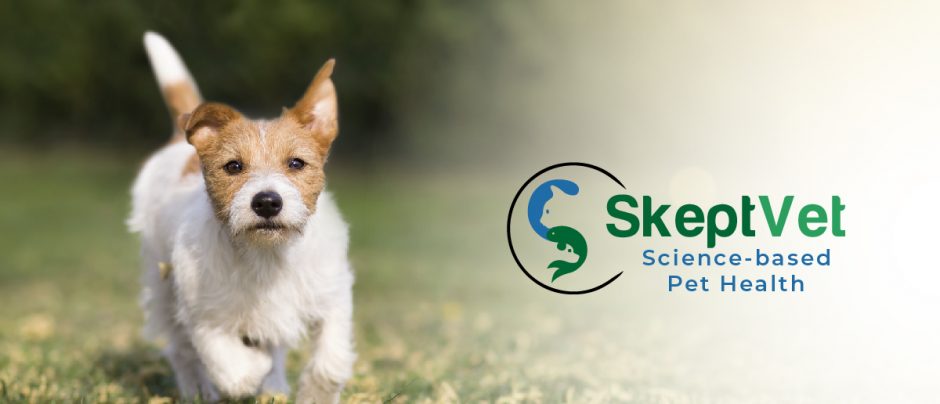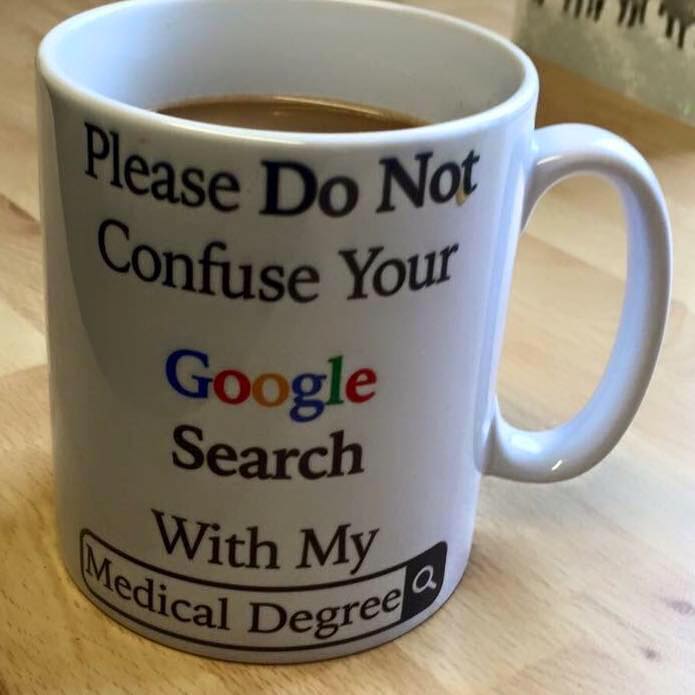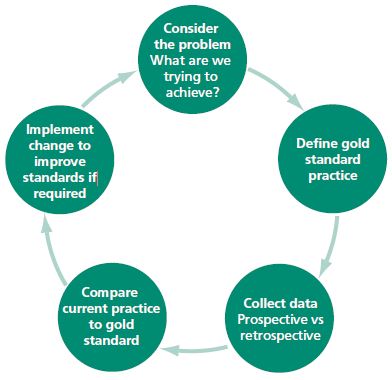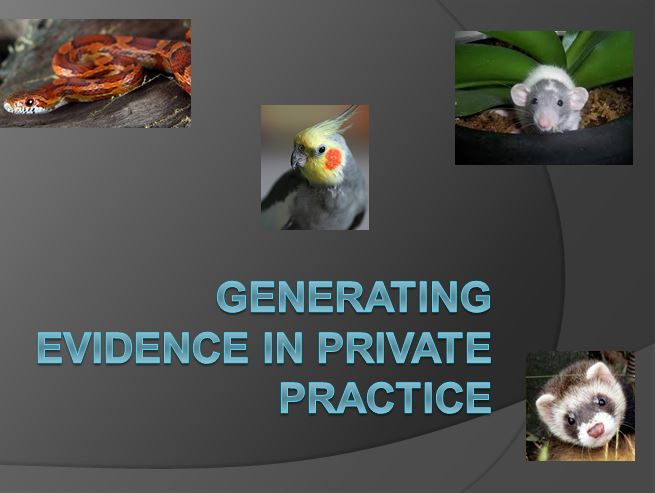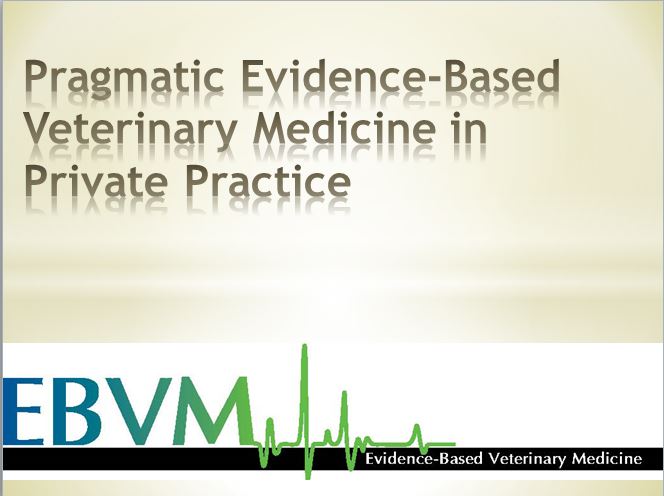Homeopaths often claim they are being unfairly “attacked” when skeptics point out that homeopathy is irrational, pseudoscientific, or simply ineffective. They portray themselves as innocently minding their own business until we spontaneously attack them. This ignores the reality, however, that homeopaths frequently promote homeopathy as an alternative to scientific medicine, and they often do so with their own vigorous criticism of conventional veterinary medicine. Here are a few examples:
Did you know that conventional veterinary medicine (excluding surgical options) and its conventional drug therapies – is capable of relieving symptoms but not curing your pet? If you have a pet you love or farm animals you care for – homeopathy is the only system of veterinary medicine that holds the potential to actually cure animals of disease.
Academy of Veterinary Homeopathy Facebook page
Veterinarians and animal guardians have to come to realise that they are not protecting animals from disease by annual vaccinations, but in fact, are destroying the health and immune systems of these same animals they love and care for. Homeopathic veterinarians and other holistic practitioners have maintained for some time that vaccinations do more harm than they provide benefits.
Dr. Charles E Loops
The model of disease prevention put forth by conventional veterinarians is fundamentally flawed. It is in fact damaging the animals whose owners partake in it.
Dr. Will Falconer
Dr. Preston practiced allopathic medicine for twenty five years before realizing that the vaccinations and drugs she dispensed daily were causing more problems than they ever solved and often to a more severe degree…The drugs prescribed every day were literally destroying healthy organs and shortening lives.
Over the years, drugs and vaccines have made our pets, our beloved companions, seriously sicker and have shortened their natural life span. Why do we so often see premature aging? How do we STOP this trend? Treat holistically!
Epilepsy in dogs and cats can develop at any age. Allopathic veterinarians do not give you any real reason that this develops in your beloved dog or cat.
What the vets don’t realize is that they themselves have very likely created this syndrome with vaccines. Yearly administration of multi-valent vaccines assault the animal’s immune system over and over. More and more animals are developing ‘auto-immune’ diseases and the allopathic community has no idea why.
Dr. Jenifer Preston
Doctors that spend the time to find and promote health take more time in the exam room, and it doesn’t make financial sense. Doctors aren’t rewarded for the health of their patients; they are rewarded when their patients are sick and they need testing and medical intervention. And even the most idealistic and dedicated doctors arrive in the profession with large student loans to pay. Volume of patients, not vitality of patients will pay the bills
Doctors and veterinarians are not trained in nutrition because it will not help them financially. There is much more money in surgery and drugs. We learn our medicine in programs and teaching hospitals that are typically funded by those who have the most to gain financially: the drug companies.
Dr. Barbara Royal
From the AVH Facebook page-
The model of disease prevention put forth by conventional veterinarians is fundamentally flawed. It is in fact damaging the animals whose owners partake in it.
This broken model of disease “prevention” will never change from Dr. WhiteCoat’s side, who sells it:
He refuses to see the possibility of it causing harm.
He’s comfortable in it; change loses to maintaining the status quo.
He profits from providing it and profits again from the disease it causes. From the Academy of Veterinary homeopathy Facebook Page-“There is a big push underway to get pet owners to return to conventional veterinarians… and guess who is paying for it. Yup big pharma and the commercial food companies like Hills… what a surprise!!! Don’t be fooled. Holistic vets actually keep your pets healthy and happy at a fraction of the cost. To find one visit www.theavh.org”
“Did you know that when it comes to feline leukemia, EVERY SINGLE vaccine is unnecessary. Why? FeLV is a chronic disease, and vaccines by definition don’t prevent chronic disease. And FeLV is very much an opportunist virus, attacking and setting up housekeeping in only 10% of those exposed. You can imagine these are the weaker, poorly nourished animals, likely eating an unnatural kibble diet.”“
We interrupt our normal posts for an important announcement. The CDC is reporting sharp increases in the number of patients with swine flu. Homeopathic physicians have long used the homeopathic remedy Influenzinum to safely protect their patients from the flu with great success. The normal protocol – Influenzinum 200C – one pellet dissolved in the mouth once a month. In cases where flu is widespread – a dose every two weeks during a period of widespread flu is often advised. There are also an array of wonderful remedies one can take for flu symptoms – again that are safe, quick acting and effective.”
“Allopathic (conventional Western) medical thinking generally seeks immediate gratification: just make the symptom go away. So the patient may be better in the short term, but is usually worse in the longer term. Homeopathy is just the opposite: sometimes the symptoms are worse in the short term (such as with aggravation or the reversal of a previous suppression), but the real benefit is in the longer term.”
- “Treatment with allopathic drugs (antibiotics, steroids, hormones, etc.) should be avoided unless absolutely necessary. The need for drug treatment is actually quite unusual, and should be considered a last resort.”
- “Dr. WhiteCoat and the monstrously huge pet food industry (sales of $20+ billion per year) would like you to believe you can’t possibly make a raw diet for your pets. They are invested in selling you bags of kibble, cans of mucky meaty glop, and the best marketing of all, “prescription diets” for those health challenges your animals may confront.”
- “As I look time and again at when my patients started their decline into poor health, I repeatedly see the timing being “about a month” after a round of vaccinations. Not in every case, but in a large percentage of my patient population, this is true.”
- “What things make your pet more vulnerable to cancer? Anything that impairs immune system function. The following are, in order of importance, those things your animal receives that cause immune system breakdown: Vaccination Heartworm pills Flea pesticides Antibiotics”
- Dr. Will Falconer
AVH standards of practice-
1) Only the remedy that is homeopathic to the patient is to be used.
2) Drugs and methods of treatment which are not homeopathic to the case are to be avoided because of the possibility of interference with the progress of cure.
Examples of truly dangerous practices recommended by homeopaths-
I’m building a custom homeopathic emergency kit, with remedies that will get your animal well in the common emergencies you are likely to confront. Things like:
- vomiting after eating spoiled food
- bee stings and worse, the allergic reactions to them that can shut off airways
- injuries: car accidents, tails in a car door, sprains, etc.
- bite wounds, cuts, gunshot wounds
- splinters, fox tails, thorns
Imagine: your dog or cat or horse finds herself suddenly in a crisis, and you can treat that crisis on the spot, with powerful medicine that’s got a long history of curing people and animals quickly and effectively.
In most cases, you’ll likely be able to avoid a trip to the emergency vet, and all the stress and side effects and expense that goes with that. In the worst case scenario, you’ll give a remedy on the way, and help the healing process get a great start before you arrive. You might even arrive at the E.R. and be told you can head home, everything’s well, thanks to your efforts on the spot.
The Top Five Ways to Healthy Pets (doing the opposite has been the biggest predictor of illness and dying too soon that I’ve seen in my 30+ years of practice)
- Stop Vaccinating Them.
- Feed Them What Their Ancestors Ate.
- Stop Using Pesticides to Kill Fleas.
- Stop Using Poisons for Heartworm Prevention.
- Give Them Raw Bones (for the whitest teeth and freshest breath ever).
Imagine avoiding risky vaccinations while getting very strong immune protection against parvo and distemper, the two potentially deadly diseases of puppies.
You know vaccinations are grossly over provided in our broken system of veterinary medicine. The pushing of vaccinations by Dr. WhiteCoat throughout your animal’s life doesn’t add to her immunity…And you know that vaccines are harmful. Chronic disease often follows vaccination, even a single vaccination.
A lecture on parvo by Dr. Todd Cooney lit us up, as he showed us statistics from his homeopathic practice in Indiana that the vaccinated pups had less chance of surviving parvo than those not vaccinated for that disease!
Parvo vaccine itself was immune suppressive.
Parvovirus was ubiquitous in the environment.
Animals treated homeopathically when sick with parvo had far better survival rates than those treated with the usual drugs.
Distemper was prevented by taking pups to a known wildlife area where raccoons with distemper lived.
Dr. Rosemary Manziano learned of the outbreak of canine distemper in raccoons in her area through the CDC. She boldly suggested to her puppy owners over a period of 11 years that they visit a pond known to be a hangout for these raccoons. After a brief period of sniffing around the bushes and maybe drinking the water, the pups were brought home.
This was repeated a week later, and on the third week, the good doctor would test for distemper titers, the evidence of immune response. Lo and behold, these pups had fantastic titers indicating strong immunity! And, in case you’re wondering, not one puppy ever got sick in the least. This happened in well over a hundred pups and was, as Dr. Manziano called it, “fool proof immunization.”
After eleven years, it stopped working. She assumed that the disease in raccoons had run its course, natural resistance having been gained by their population.
Dr. Manziano suggested that her new pup owners who wanted natural immunization take short, five minute visits to the most popular dog parks. Those parks with the highest dog traffic were recommended
A collection of anecdotes claiming homeopathy should be used to treat life-threatening disease-
Cooney, T. Homeopathic treatment for epidemic diseases: Focus on parvo and distemper. Integrative Veterinary Care. 2015;5(4);54-58.
Regarding heartworm prevention-
Over the years at holistic and homeopathic conferences, various veterinarians have reported problems with each of the preventatives.
[I] have seen few problems. One was a Boston Terrier who tried to re-landscape the yard, moving heavy boulders until we stopped the preventative.
From the AHVMA conferences, many holistic veterinarians feel that dogs do fine [without preventatives]. We all agree that the drug companies are suggesting doses too high and too often.
Keep you dog as healthy as possible using homeopathic principles. A healthy dog will kill those migrating larvae…The solution is to make your dog as healthy as possible by vaccinating the least, feeding the best diet (probably a raw meat…and treat the energy problem…Homeopathy is great for this. A healthy dog will be very unlikely to be ill from heartworms.
Your dog could become infected…yet not be ill from the infection at all…. A healthy body should tolerate a low level of parasites. Therefore, many clients choose to use no preventative and I support them in that choice.
If you are very afraid of your dog getting heartworms, give the preventative carefully. Observing your dog will give you clues that you need to try one of the other preventatives or use none at all….Learn how to ask yes/no questions of the universe B dowsing, pendulum, intuition, applied kinesiology talks of checking with nature for all your decisions in life and teaching a yes/no finger method)….You can certainly do energy healing after giving a preventative such as Reiki or Healing Touch which you can learn top [sic] do yourself or go to a practitioner.
Herbs and homeopathic treatment for adult heartworms are about 75% effective.
Most dogs seem to recover from heartworm infection without the conventional drugs and without serious heart problems. There is, of course, a risk that your dog has an energy weakness for heart problems and if infected, will have serious problems. A healthy dog will usually have no heart problems and the worms will die in a year or so on their own.
